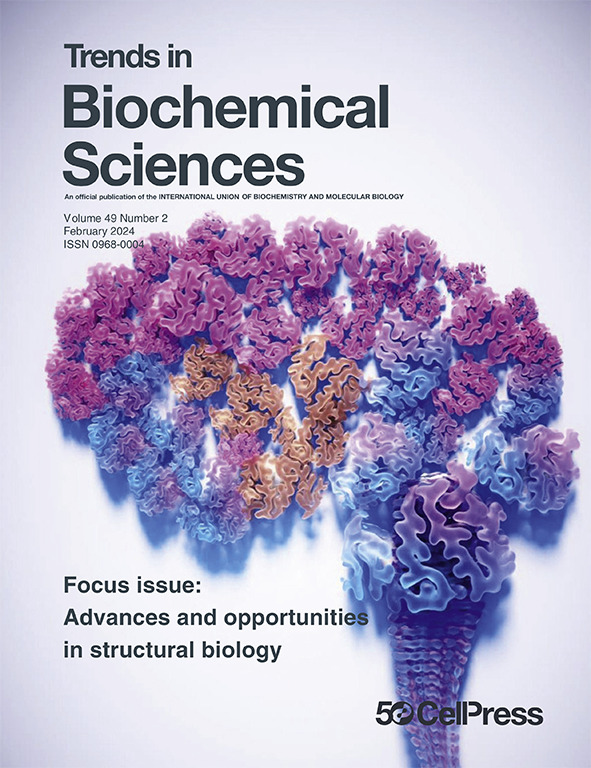LRRC8/VRAC氯离子和代谢物通道在信号和体积调节中的作用。
IF 11
1区 生物学
Q1 BIOCHEMISTRY & MOLECULAR BIOLOGY
引用次数: 0
摘要
体积调节阴离子通道(VRACs)是脊椎动物细胞中几乎普遍表达的质膜通道,在细胞体积调节和信号传导中发挥重要作用。除了传导阴离子,如氯化物,vrac运输代谢物,神经递质,免疫调节剂和药物,而不考虑其电荷。vrac介导的这些分子的转运具有深远的(病理)生理意义。最近发现的vrac是多达五种不同LRRC8蛋白的异构体,这使得vrac的作用可以用遗传和分子工具来解决。低温电子显微镜(cryo-EM)和诱变技术对vrac的结构和功能有了深入的了解,但它们的激活机制仍然是一个谜。在这里,我们关注新的发展,并提出VRAC运输代谢物和信号分子的能力可能在生理上比其在细胞体积调节中的作用更重要。本文章由计算机程序翻译,如有差异,请以英文原文为准。
LRRC8/VRAC chloride and metabolite channels in signaling and volume regulation
Volume-regulated anion channels (VRACs) are almost ubiquitously expressed plasma membrane (PM) channels of vertebrate cells with roles in cell volume regulation and signaling. Besides conducting anions such as chloride, VRACs transport metabolites, neurotransmitters, immunomodulators, and drugs irrespective of their electrical charge. VRAC-mediated transport of these molecules has profound (patho)physiological significance. The recent identification of VRACs as heteromers of up to five different LRRC8 proteins allowed the roles of VRACs to be addressed with genetic and molecular tools. Cryogenic electron microscopy (cryo-EM) and mutagenesis yielded insights into the structure and function of VRACs, yet their activation mechanisms remain enigmatic. Here we focus on new developments and suggest that the ability of VRAC to transport metabolites and signaling molecules may be physiologically more important than its role in cell volume regulation.
求助全文
通过发布文献求助,成功后即可免费获取论文全文。
去求助
来源期刊

Trends in Biochemical Sciences
生物-生化与分子生物学
CiteScore
22.90
自引率
0.70%
发文量
148
审稿时长
6-12 weeks
期刊介绍:
For over 40 years, Trends in Biochemical Sciences (TIBS) has been a leading publication keeping readers informed about recent advances in all areas of biochemistry and molecular biology. Through monthly, peer-reviewed issues, TIBS covers a wide range of topics, from traditional subjects like protein structure and function to emerging areas in signaling and metabolism. Articles are curated by the Editor and authored by top researchers in their fields, with a focus on moving beyond simple literature summaries to providing novel insights and perspectives. Each issue primarily features concise and timely Reviews and Opinions, supplemented by shorter articles including Spotlights, Forums, and Technology of the Month, as well as impactful pieces like Science & Society and Scientific Life articles.
 求助内容:
求助内容: 应助结果提醒方式:
应助结果提醒方式:


